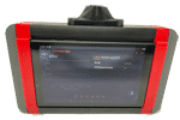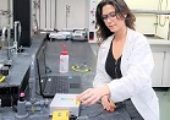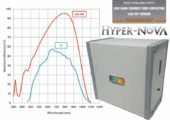Taylor F. Nelson, Christopher M. Reddy , and Collin P. Ward
Abstract
The photodegradation rates of floating marine plastics govern their environmental lifetimes, but the controls on this process remain poorly understood. Photodegradation of these materials has so far been studied under ideal conditions in the absence of environmental factors such as biofouling, which may slow photochemical transformation rates through light screening. To investigate this interaction, we incubated different plastics in continuous flow seawater mesocosms to follow (i) the extent of biofilm growth on the samples and (ii) decreases in light transmittance through the samples over time. We used consumer products with high relevance (e.g., shopping bags, water bottles, and packaging materials) and with different formulations, referring to primary polymers (polyethylene (PE) and polyethylene terephthalate (PET)) and inorganic additives (titanium dioxide (TiO2)). The behavior of consumer-relevant formulations was compared to those of pure PE and PET films, revealing that the relative effects of UV- and, to a lesser extent, visible-light screening differ based on the formulation of the product. Pure PE showed greater relative UV-transmittance decreases (Δ = −34% through the entire sample, accounting for biofilm on both sides of the plastic film) than PET (Δ = −20%) and PE products with TiO2 (Δ = < −10%). Our results demonstrate that even with biofouling, photodegradation remains a highly relevant process for the fate of marine plastics. However, we expect photodegradation rates of plastics in the ocean to be slower than those measured in laboratory studies, due to light screening by biofilms, and the specific formulation of plastic products is a key determinant of the extent of this effect.





